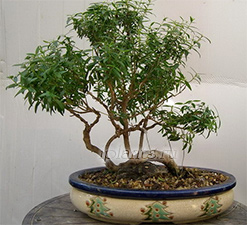We have already talked about what a wonderful home plant myrtle is on the pages of our Encyclopedia. Here we will talk about how to grow myrtle from a cutting to an adult tree.
Myrtle tolerates pruning and pinching well at any time of the year, with the difference that in an adult wintering plant, which is at rest, without signs of growth, you can painlessly cut one sprig into a stalk, well, if you really need it - two, no more. And in a growing myrtle that continues to grow, you can safely radically cut the crown. The best time to cut myrtle branches for rooting is spring, the end of winter. If you cut the twigs from the "sleeping" myrtle, they must be immediately transferred to conditions suitable for growing: heat (20-25 ° C), air humidity not lower than 50% and light (if necessary, additional light) - several hours of direct sun in the morning or evening.
For rooting, twigs from 7 to 15 cm can be used, the optimal length is measured not in centimeters, but in a piece of the stem - rooting occurs in the semi-lignified tip of the handle. It is clear that the 5cm twig still has a green stalk, it will simply wilt. At the cut handle, you need to cut off the lower leaves and put them to rooting in water or moist vermiculite.
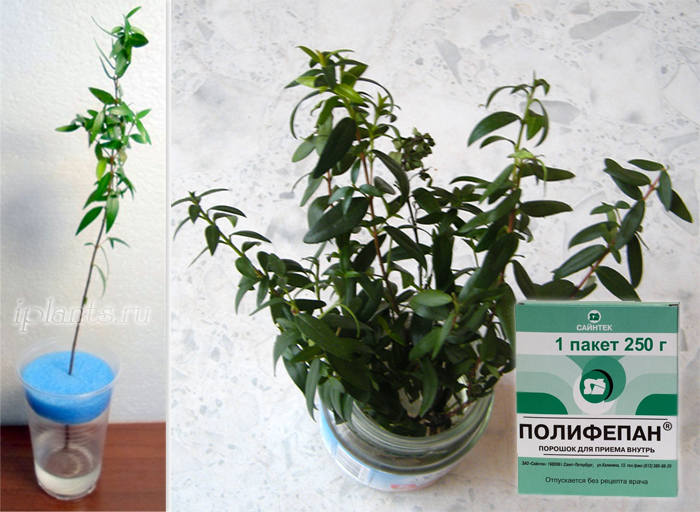
As you can see, in the first version, there is one handle in the cup, it is supported by a mug of a foam polyethylene cup cut to the diameter and cut to the center. Not only does it support the cuttings, it prevents the water from evaporating too quickly. You can cut such a circle out of foam rubber.
In the second version, many cuttings are rooted in one jar. Not all of them will give roots.
What is the difference and how best to root? The fact is that if you get one single stalk, you should do as shown in the first photo. Moreover, the water should be very clean, boiled. Watch carefully for the first two days - if the water remains clear, everything is fine, it just remains to wait for the roots to appear. If the water is cloudy, replace it with fresh water and add a secret component to it. There is such a drug Polyphepan in the pharmacy - it is an adsorbent (black powder looks like dry earth), which will not allow water to deteriorate, prevents the development of bacteria, but does not interfere with the rooting of cuttings. It needs to be added half a teaspoon to half a glass of water.

Yuri Aleksandrovich Markin (YUM) shares his many years of experience: If everything is in order with water and the viability of the handle, roots form quite quickly - callus forms in the first week (white cones at the tip of the stem), and good roots grow for 2-3 weeks. When they reach at least 5 cm, more is possible, it is time to transplant the cuttings into the ground.

In the photo you see strong roots and the beginning of vegetation in the rooted myrtle stalk, but you need to plant it carefully in order to minimally injure delicate root processes. Therefore, Yuri Alexandrovich ties the handle to the peg. The peg, stuck in the ground, securely holds the handle without deepening the root neck.
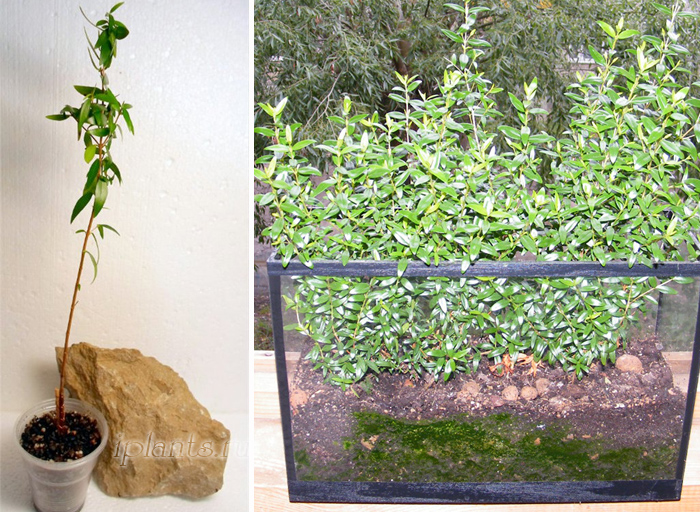
If the roots of myrtles are strong, they instantly take root, and in conditions of high humidity they grow very quickly. Thickened plantings in a common container require good ventilation of the room and timely seating in separate pots. Perhaps it is more correct to immediately plant the cuttings of myrtles in separate containers, depending on the desired shape of the adult plant. If it is planned to grow a dense bush, you can plant 2-4 cuttings together, if the myrtle is planned to be grown with a stamp or how to squeeze, then each cuttings has a separate pot. It is also possible to merge the trunks, it also implies landing several cuttings in one container, but it requires some skill and preparation.
Is it possible to trim the roots of myrtle when transplanting entrenched cuttings?
Yes, it is possible, if the root system is well developed, has many lateral roots of the upper part, then elongated roots can be painlessly cut. After cutting the roots, they need to be sprinkled with a crushed tablet of activated carbon or ground cinnamon.
Myrtle transplant pot sizes
The health, growth rate and appearance depend on how you choose the right pot for planting the handle. Many people tend to take pots with a large margin, but if the pot is large, after watering the earth will dry for a very long time, as a result, a salt effusion forms on the surface - a whitish or red coating of calcium and magnesium salts. In this case, the acidity of the soil shifts to the alkaline side, in such an environment some nutrients are poorly absorbed and the likelihood of rot decay is high. In a too small pot, especially when planting in pure peat, on the contrary, you can greatly dry the root system of the plant.
Here is an example, planting a rooted twig (the thickness of the trunk was originally 2 mm), which has long grown, and the height has reached 75 cm from the ground.
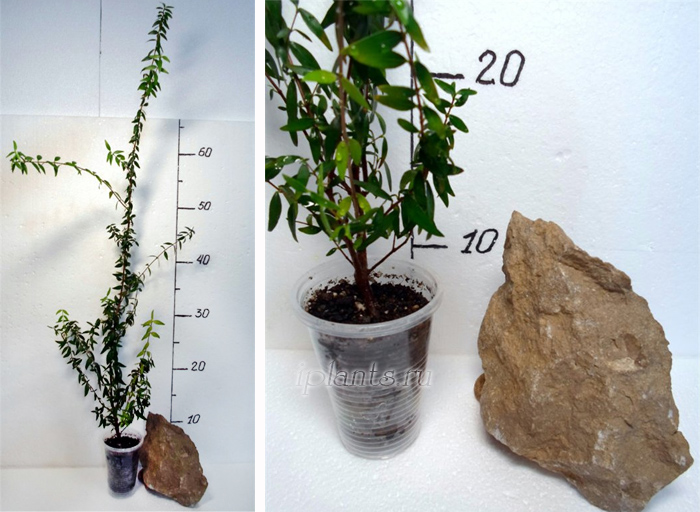
Myrtle grew in a cup (200 g) for about two years. The thickness of the trunk at the root neck reached 6 mm. The earthen lump is almost completely developed by the roots. If your handle has roots only in the lower part, formed a "beard," or crawled out of drainage holes, and the upper part of the pot is not mastered by roots, it makes sense to cut off those roots that stick out of the holes of the pot, or those that curled at the bottom spiral, displacing all the soil. After that, you need to transplant the young myrtle back into the old pot. The new one can only be transplanted when the roots fill the entire space of the pot.
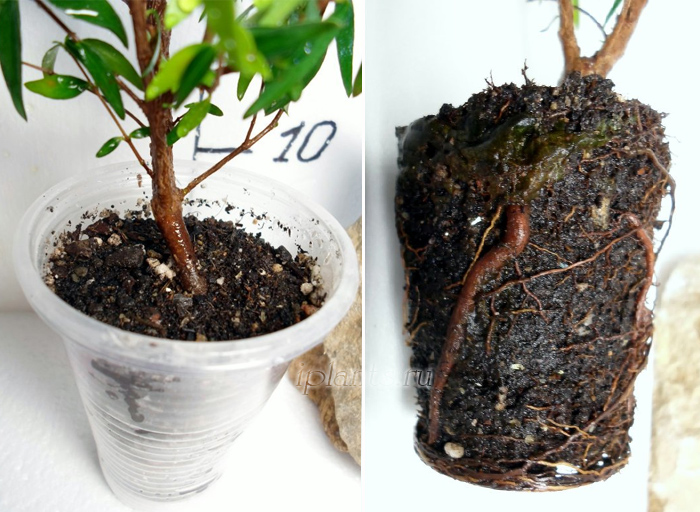
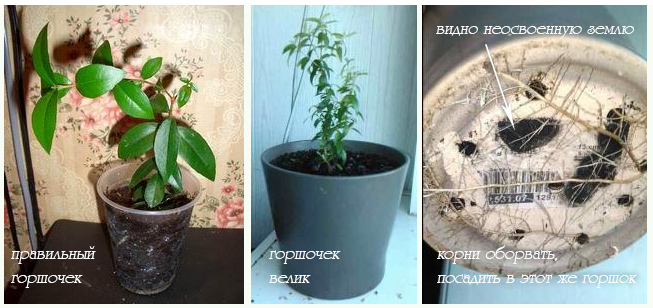
Myrtle formation
The formation of a myrtle tree occurs constantly. Cutting the ends of shoots can be carried out repeatedly during the spring-summer season. You can grow a myrtle tree in a completely free style, a shaggy bush. You can form a stamp or another style. But first you need to present the image you want to strive for.
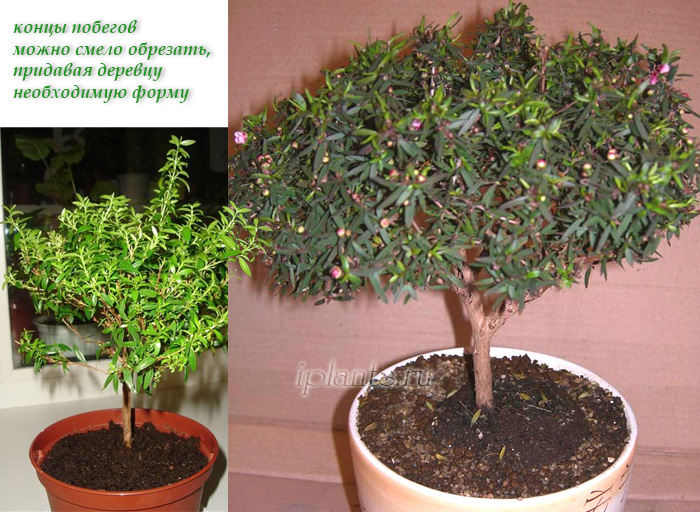
A myrtle tree blooming with pink buds (right in the photo, Pavel Karpenkov) is so beautiful not from extreme unpretentiousness, but from what is grown in ideal conditions for it: it stands in an area where the illumination is close to solar, humidity at 90% and temperature 24 ° C. It is watered every 2-3 days (it is not dried out or poured). Planted in the ground from a mixture of acadama with sand and some land for seedlings. The drainage is high - myrtles do not like wetlands in the roots. They spray it every day.
Important: when wintering in cool and, especially cold conditions, spraying is not required, and watering is scarce.

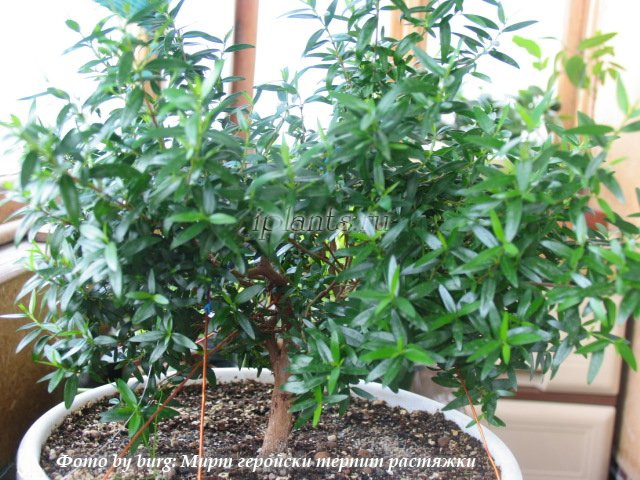
With the help of wire, you can pull the branches in the desired direction, they are quite plastic even in adulthood. But the old branches covered with brown bark can be bent gradually, smoothly, over several months.
Please note that while the myrtle tree is gaining trunk thickness, it does not need to be planted in a bonsai pot, the expanse of the pot is needed for the plant to accelerate the trunk.
From personal experience, Borya: My myrtle grows on the northwest window, but it will not be possible to form a spherical crown without illumination. I use this technique: as the branches lengthen, the largest of them are tilted to the sides almost to a horizontal position, and fixed with wire. Then, along the entire length of the branch, new shoots begin to appear from sleeping buds (before that they were in the shade), and the entire branch turns out to be densely leafy.
The size of the pot should correspond to the size of the root system and increase as the earth coma braids. It all depends on how many roots myrtle has. In my opinion, it is better to take tighter dishes than spacious ones, since in the second case, part of the earth may turn sour and become unusable even before the roots have time to penetrate it.
I prefer to plant myrtles in a mixture of some peat soil with coarse sand, in a 1:1 ratio. Of the purchased ones, in my opinion, you can use the Cactus mixture as the most porous and suitable for most plants.
What you need to do to give myrtle the appearance of a tree from a cutting
From personal experience, Borya: You need to choose the largest, central, and, most importantly, cute branch of the bush and cut off all the others. It is convenient to do this with small scissors for cutting nails. On it, you need to remove leaves and side shoots from below to the height of the intended trunk. This will result in an even barrel that will slowly get fat.
Since, when growing a'bush', the branches touch and, as it were, slightly'support' each other, then, 'left alone,' this branch can for some reason bend (from accidental touching, or as a result of tilting towards the light, for example). Therefore, a support in the form of a peg stuck nearby is desirable for her.
As a result, the growth of shoots on the upper leafy part begins. Those shoots that appear not on the 'crown', but on the trunk, must be removed (otherwise, a bush will turn out again). When the barrel reaches a thickness of about 0.5 cm, the support can be removed.
Bamboo skewers (3-4 mm thick and about 30 cm long) are very suitable for the role of sticks for props. The peg should be located, in relation to the plant, from the side of the room or from the side, so as not to shade.
Myrtle - bonsai
Many people wish to have a miniature myrtle tree in a bowl, but before the myrtle trunk gains thickness (from 1.5 cm or more), there is no question of transplanting into bonsails. And all the plant material with which work is being done on the formation is called potensai.
An example of such work from Yuri Alexandrovich Markin:
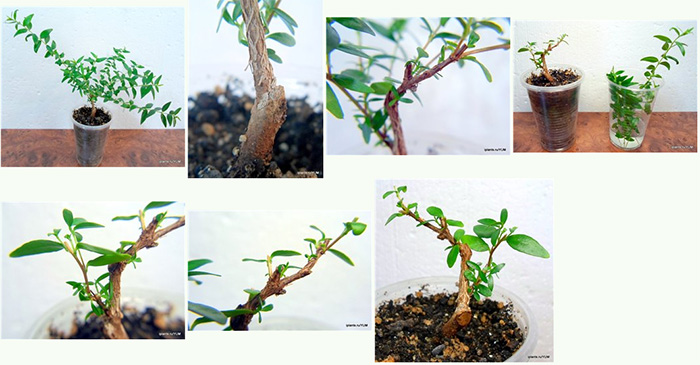
Bonsai style Sokan
And this is Potensai - Sokan style "Twin Trunks." 2-3-year-old plants grown from rooted cuttings are used. Rearranged from wintering to prepare for spring vegetation - pruning and formation for bonsai styles. The skeleton and trunks of the first potensai specimen are formed in the Sokan style with ligature and stretch marks superimposed. The height of the workpiece in the final form is 28 cm:

Formation work continues. The myrtle has its own subtleties, says Yuri Alexandrovich - fragile wood and loose bark, although it grows together remarkably when broken.
Before all the manipulations, I do a long shower to soak the fabrics. When bending vertical and rather thick branches at an angle of 90 °, I sort of knead the near-trunk area between the fingers - I move it like a joint on a finger.
Next, I begin to apply a ligature to the trunk and lead the wire to the bent branch. Then, the branch, together with the wire entwined with two turns, begin to slowly bend. Under the branch, you can substitute a screwdriver and create a stop at the bend. After bending the branch, by more than 90 °, I rewind the ligature already with the branch fixed in the desired position.
Also, you can perform a directional fracture, i.e. break a branch and wrap it in raffia, and then apply a ligature (the main subtlety is not to break it at all when applying raffia and ligature, a skill and a sensitive tactile sensation of the material are required).
Another way can be applied to thick branches. Make a crescent cut under the branch, in the place of the intended bend, to the middle or by 2/3 of the branch thickness. The cut is made in thin sections with alignment (bending and specifying the position of the branch in the final form), if not enough, then a thin fragment is removed from both sides (such as slices).
Further according to the scheme - winding with raffia and superimposition of a ligature. If it is difficult to bend the copper wire in insulation with a cross section of 2.5 mm, then you can apply two wires of 1.5 mm or several folded wires of an even smaller cross section - for example - the photo above (lower left corner), the coil of wire in the photo with myrtle. Such a wire can be used for both ligature and stretch marks.
Bonsai style Ikadabuka
Another example of the work on the formation of the bonsai myrtle in the style of Ikadabuki from Gennady Boronin (Genn). The author also modestly calls it only an attempt to form: "2 years trying to become a bonsai." The height of the myrtle tree is 27-30 cm.
All the details and photos in the theme Trying to raise bonsai.
Photos and materials used: Yu. A. Markin (YUM), Borya, Natalie, barsuchok, Alexander, P. Karpenkov (beomaster), G. Boronin (Genn).


